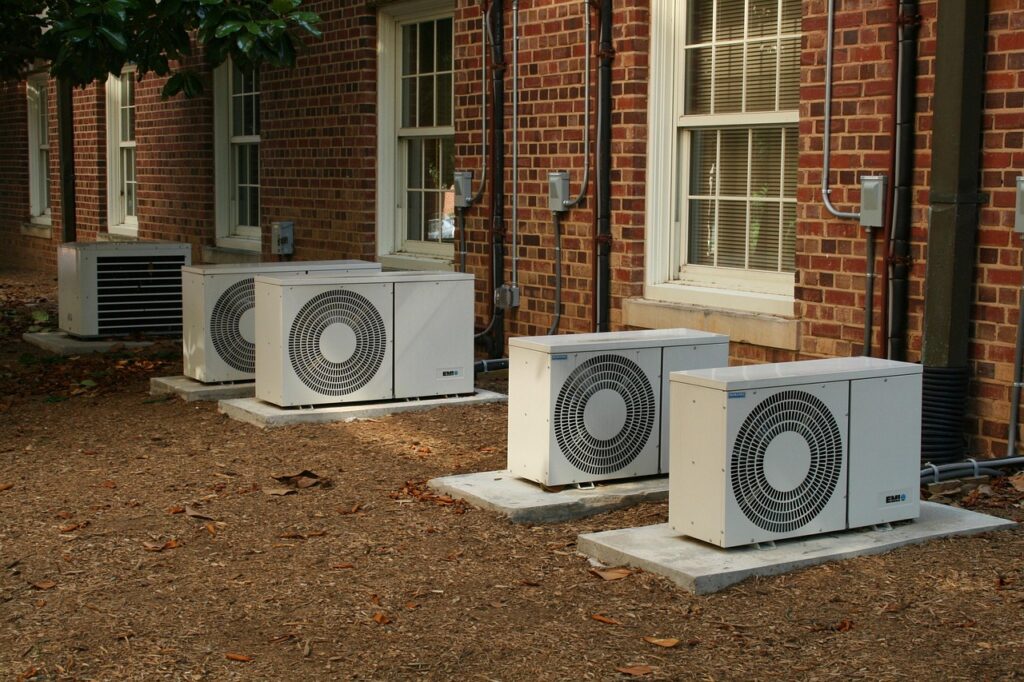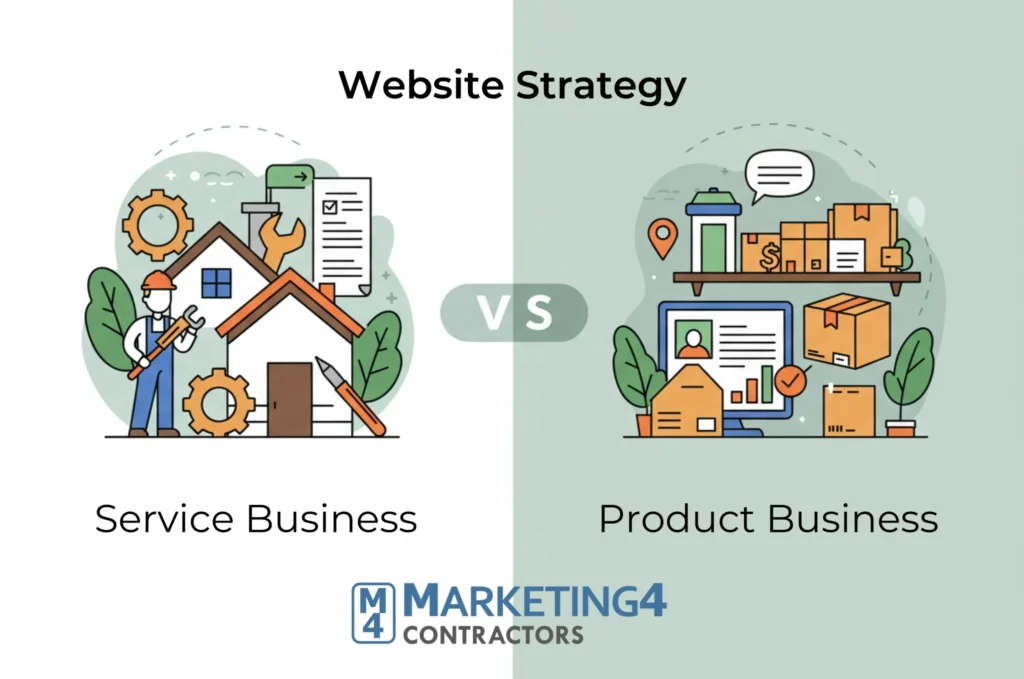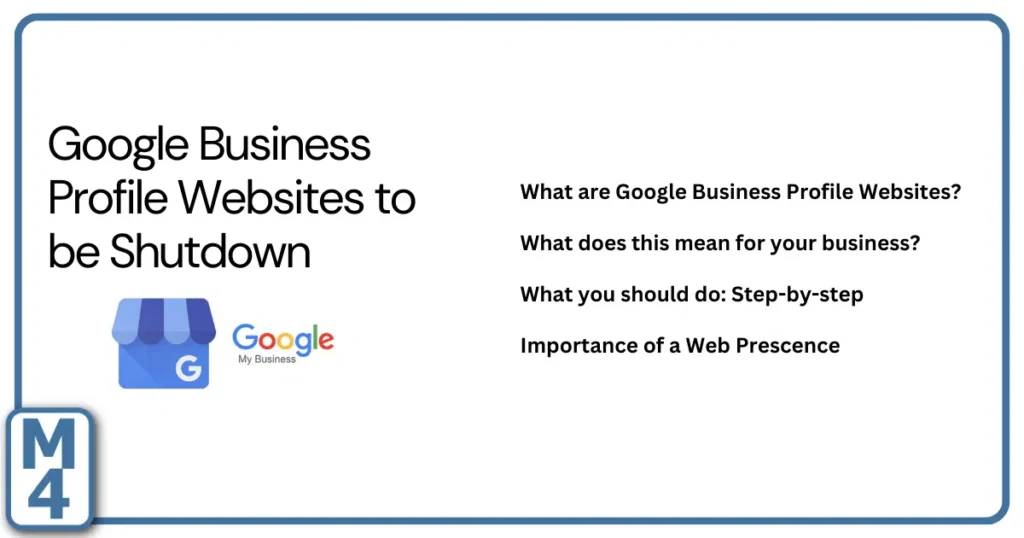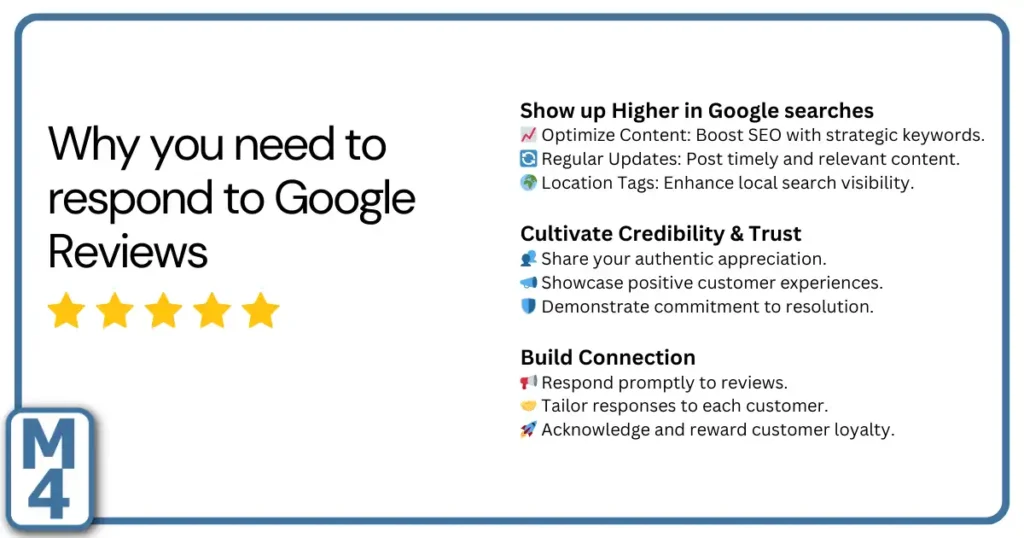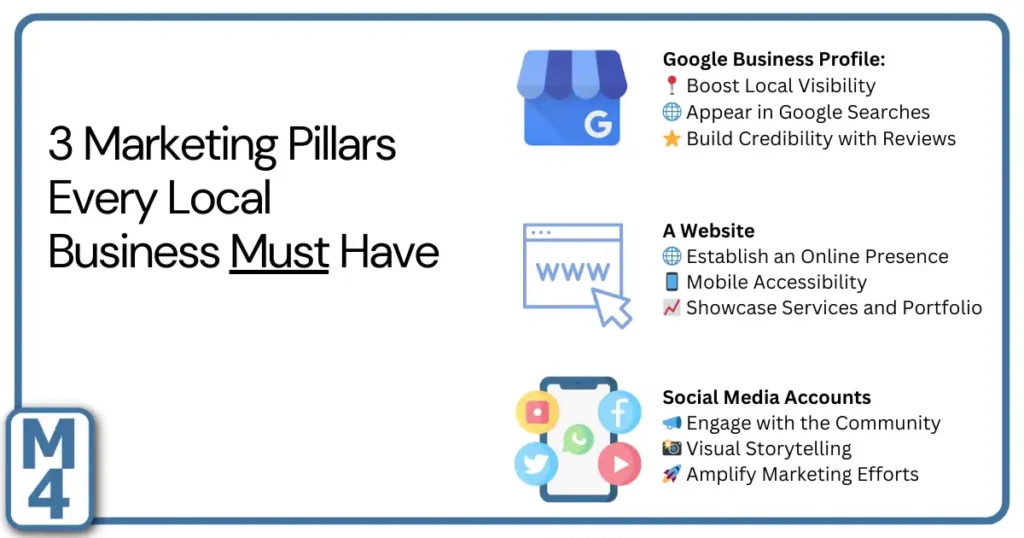TLDR: Mechanic Marketing in 2025
Small and medium auto shops don’t need complicated advertising campaigns. The best mechanic marketing comes down to building trust, being visible where customers are looking, and keeping people coming back.
- First impressions matter. Keep your lot tidy, light your signs at night, and use simple service flags. A clean, organized shop tells customers you run a reliable business.
- Reduce customer anxiety. Set clear expectations about where to park, when jobs will be ready, and how payment works. Keep records of past service so you can reference them on the next visit.
- Go digital where it counts. Optimize your Google Business Profile, ask for reviews, build a simple website with pages like “Brake Repair in [City],” and use one social platform to post before-and-afters or short tips.
- Market what customers already need. Oil changes, brakes, and tires bring people in. Package services into good/better/best options and run seasonal specials.
- Think beyond one visit. Use reminders, pre-booking, family plans, and respectful upsells to build loyalty. Referrals and fleet accounts can fuel steady growth.
Auto repair marketing is about consistency, communication, and showing customers you care. Do the basics well, and you’ll stand out from other shops in your area.
Ultimate Guide for Mechanic Marketing in 2025
You might be the best mechanic in town, but if nobody knows about your shop, it doesn’t matter. Customers won’t just appear. That’s where mechanic marketing comes in.
Most small and medium auto shops don’t have a marketing department. You’re already working long hours fixing cars, managing staff, and keeping the lights on. The idea of marketing feels overwhelming.
The good news is you don’t need to become an expert overnight. With a few simple strategies, you can build trust, get more customers, and create a steady stream of repeat work.
Let’s walk through everything you need to know about marketing for your shop in 2025.
Why Customers Choose One Mechanic Over Another
Think about the last time you picked a service business. You probably didn’t choose the cheapest. You chose the one that felt reliable.
Car owners are the same. They’re not experts, so they’re nervous.
- They fear being ripped off.
- They worry about surprise bills.
- They want to avoid breakdowns.
What they really want is trust, clarity, speed, and convenience. If you can deliver those, they will stop calling around and stick with you.
You’ll also meet different types of customers:
- The pragmatist: wants the car fixed fast, no fluff.
- The skeptic: always suspects overcharging.
- The deal-seeker: shops around for coupons.
- The relationship-builder: wants a long-term “car guy.”
- The emergency customer: needs help right now.
- The fleet customer: owns multiple vehicles and values uptime.
Knowing these types helps you talk to each one in the right way.
This is true across many industries. Just like homeowners look for reliability in contractor marketing or businesses look for dependability in the Marketing for Movers, customers want mechanics they can count on.
The Psychology Behind Mechanic Marketing
The first visit is everything. If you nail it, you earn loyalty. If you fail, you’ve lost them for good.
Customers value trust more than price. Many will pay more if it means peace of mind. This is why dealerships get so much business. It’s not always because they are cheaper or better. It’s because they feel safer to the average customer.
You can use the same psychology in your shop:
- Anchoring: Offer three service options, like good, better, best. Most people choose the middle.
- Reciprocity: A small freebie, like a tire check, makes customers feel they should return.
- Social proof: Reviews and word-of-mouth matter more than advertising.
- Authority: Certifications or partnerships build credibility.
When you combine these, customers start to see you not as “a mechanic” but as their mechanic.
First Impressions Start in the Parking Lot
Your marketing begins before a customer even steps inside.
- Keep “ready for pickup” cars visible in the front row. It shows organization.
- Move long-term jobs to the side or back so your lot doesn’t look jammed.
- Add clear signs that show where customers should park or enter.
- Light your sign at night. Even when closed, you’re advertising.
This kind of detail might seem small, but it sends a strong message. It says you run a clean, reliable shop.
Subtle Trust Builders That Work
Trust is the fuel that keeps customers coming back. You don’t have to plaster “Honest Mechanic” on a sign. Customers judge honesty through small actions that add up over time.
Reinforce Belonging With Language
When you call or text a customer, avoid saying something generic like:
- “Hi, this is Joe from ABC Mechanics.”
Instead, introduce yourself as their mechanic:
- “Hi, this is Joe, your mechanic. Just updating you about your car.”
This reinforces in their mind that you are not just a mechanic, you are their mechanic. It builds a sense of belonging and trust. And when they talk to friends, they will naturally say things like: “I brought my car to my mechanic.”
That subtle shift makes them more likely to bring their vehicle back to you for anything that comes up, because they feel connected to you personally.
You can strengthen this identity further by using the phrase in different places:
- Invoices: “Inspection completed by your mechanic Joe Smith.”
- Emails: “Thanks for trusting us as your mechanic.”
- Text updates: “This is Joe, your mechanic. Your car will be ready at 3 p.m.”
- In-person conversations: “As your mechanic, I recommend replacing the battery before winter.”
Repeating this language consistently across touchpoints helps lock in that identity in the customer’s mind.
Return Old Parts in a Bag
Most people don’t understand car parts, but they know what trust feels like.
Handing them their old brake pads or a worn belt in a bag shows proof you did the work. You don’t have to explain.
You can offer to dispose of the parts for them, however the gesture alone says: “We did exactly what we said we did.”
Give a Car Health Report Card
At the end of the job, provide a simple sheet with red, yellow, and green boxes for common systems like tires, brakes, fluids, and battery.
- Red = needs attention soon
- Yellow = keep an eye on it
- Green = all good
This makes your recommendations more believable. Customers see where their car really stands, and they appreciate knowing what can wait. It feels like advice, not a sales pitch.
Log All the Work You Do for Each Customer
Keep track of your customers and their vehicles in an organized system. This could be software, a CRM, a spreadsheet, or even a well-kept notebook.
The key is to have a clear history of what you did, when you did it, and what you recommended.
This allows you to say things like:
- “Last time you were here we replaced your front brakes, and we suggested replacing your rear tires in about six months.”
When you reference past visits, you show three things at once:
- Competence: you know the car’s history.
- Organization: you keep records, just like a doctor’s office.
- Care: you are looking out for the customer’s safety long-term.
Customers feel reassured when they realize you remember their car and have a plan for it. It builds trust and makes it easier for them to return, because they know you already have the details on file.
Share a 30-Second Safety Tip
When handing back keys, take a moment to give one helpful insight.
- “Your rear tires are fine for now, but you’ll want to replace them before winter.”
- “Your battery tested low. It should be okay through summer, but it might cause problems in the cold.”
This shows you care about their safety, not just today’s invoice. It positions you as a trusted advisor, not a pushy salesperson.
Explain the Next Step in Plain Language
Customers fear the unknown. Instead of just saying, “We’ll give you a call,” be specific.
- “We’ll finish the inspection by 2 p.m. and call you with the update.”
- “After you approve the work, we’ll order the parts, and it should be ready tomorrow afternoon.”
Clarity lowers anxiety and makes customers feel in control.
Respect Their Time
Small courtesies stand out. Call when you said you would. Deliver cars at the promised time. If you’re running late, let them know before they have to ask.
Customers remember when you respect their schedule.
Having a texting option with your customers is great for small updates, if your customer is okay with text messages.
Show the Human Side
Even small gestures like a sticky note that says “Thanks, Mike” on the dash or a quick handshake from the tech who worked on the car can create a bond. People want to feel like more than just an invoice number.
These trust builders don’t cost much money or time. They’re not flashy. But together they reduce customer anxiety and build the kind of reputation that spreads by word-of-mouth.
Reduce Unknowns and Set Clear Expectations
One of the biggest reasons customers feel anxious about auto repair is not knowing what to expect. Clear communication reduces stress and builds instant trust.
Think about all the small questions a new customer might have:
- Where do I park when I arrive?
- Can I leave my car overnight if needed?
- When and how do I pay?
- How long will the job take?
- Will someone call me with updates?
If you answer these questions upfront, you take away uncertainty and replace it with confidence.
Practical ways to do this:
- Put up a clear sign at the entrance showing where customers should park.
- Tell every customer the process: “Drop off in the morning, we’ll call you at lunch with an update, and you can pay at pickup.”
- Use text updates so customers aren’t left wondering if their car is done.
- Make it clear if you allow after-hours drop-off or overnight parking.
It may feel obvious to you, but customers don’t know your routine. When you set expectations clearly, you make the experience predictable, and that predictability builds loyalty.
Digital Mechanic Marketing Basics
Even if you’re not into tech, you need to cover a few essentials. These are the foundation of auto repair marketing.
Every form of your marketing should highlight what Google and customers both want to see: your E-E-A-T.
- Experience: Show that you’ve worked on cars like theirs before. Share photos, videos, or short stories about real jobs.
- Expertise: Make it clear you and your team know what you’re doing. Certifications, training, or even a simple post about “3 signs your brakes need replacing” help.
- Authoritativeness: Get other people to back you up. Reviews, referrals, and mentions in the community all prove you’re respected.
- Trust: This is the big one. Consistent information online, polite responses to reviews, and honest communication all build confidence.
If your digital presence communicates these four things, you’ll stand out online and reassure people who are thinking about booking with you.
Google Business Profile
What is a Google Business Profile?
This is your most powerful tool for mechanics and auto repair shops. It’s how people find you when they search “mechanic near me.”
Make sure it has:
- Correct hours of operation.
- A current phone number.
- Photos of your shop, inside and out.
- Services listed clearly.
An optimized profile can turn casual searches into paying customers. Learn more about this here: Google Business Profile for Local Businesses.
Reviews
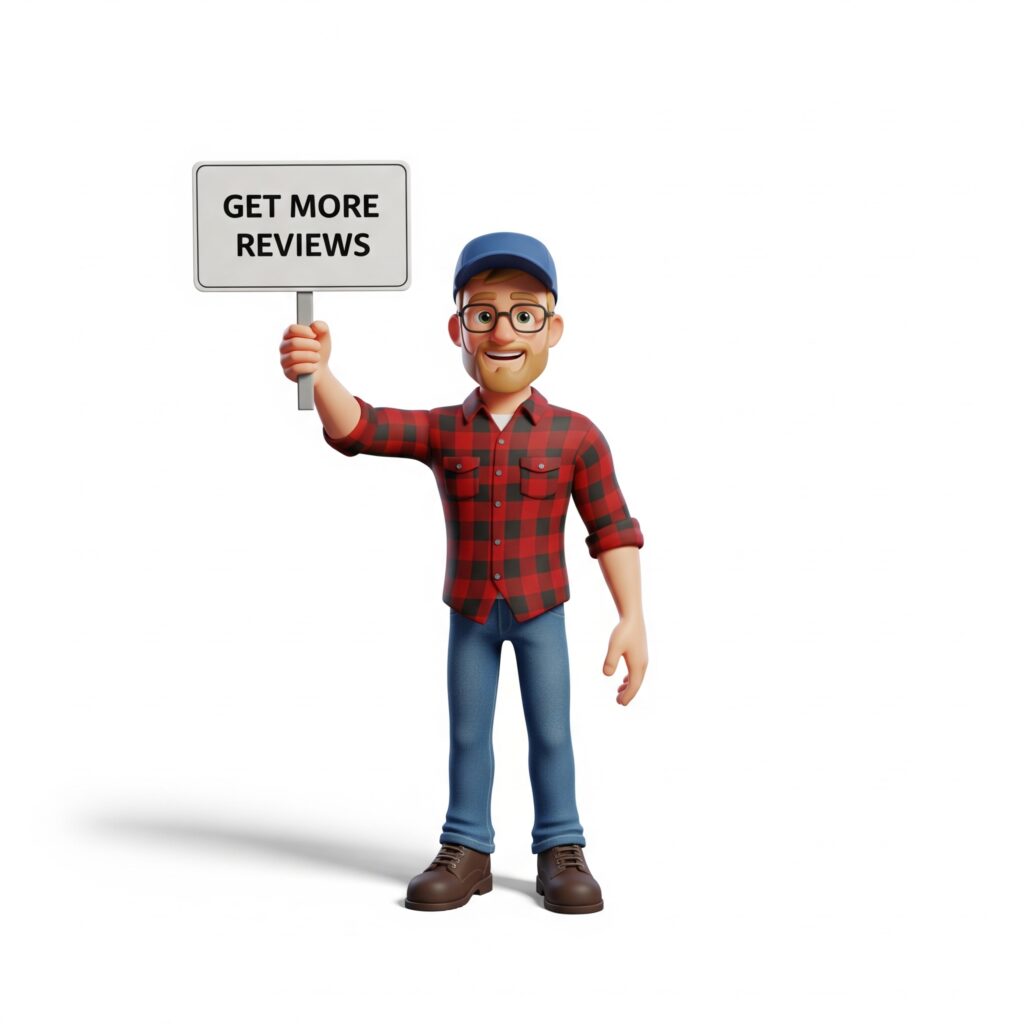
After someone manages to find you, the next thing they check is your reviews.
Ask every happy customer for a review. Hand out a card with a QR code or text them a direct link. Always reply to reviews, both positive and negative.
A calm, respectful response to a bad review shows professionalism. Not sure how to handle them? Here’s how to respond to Google Reviews
Customers trust reviews more than ads. They’re one of the strongest forms of automotive marketing.
Other industries thrive on this too, from Landscapers to Water Delivery.
Website
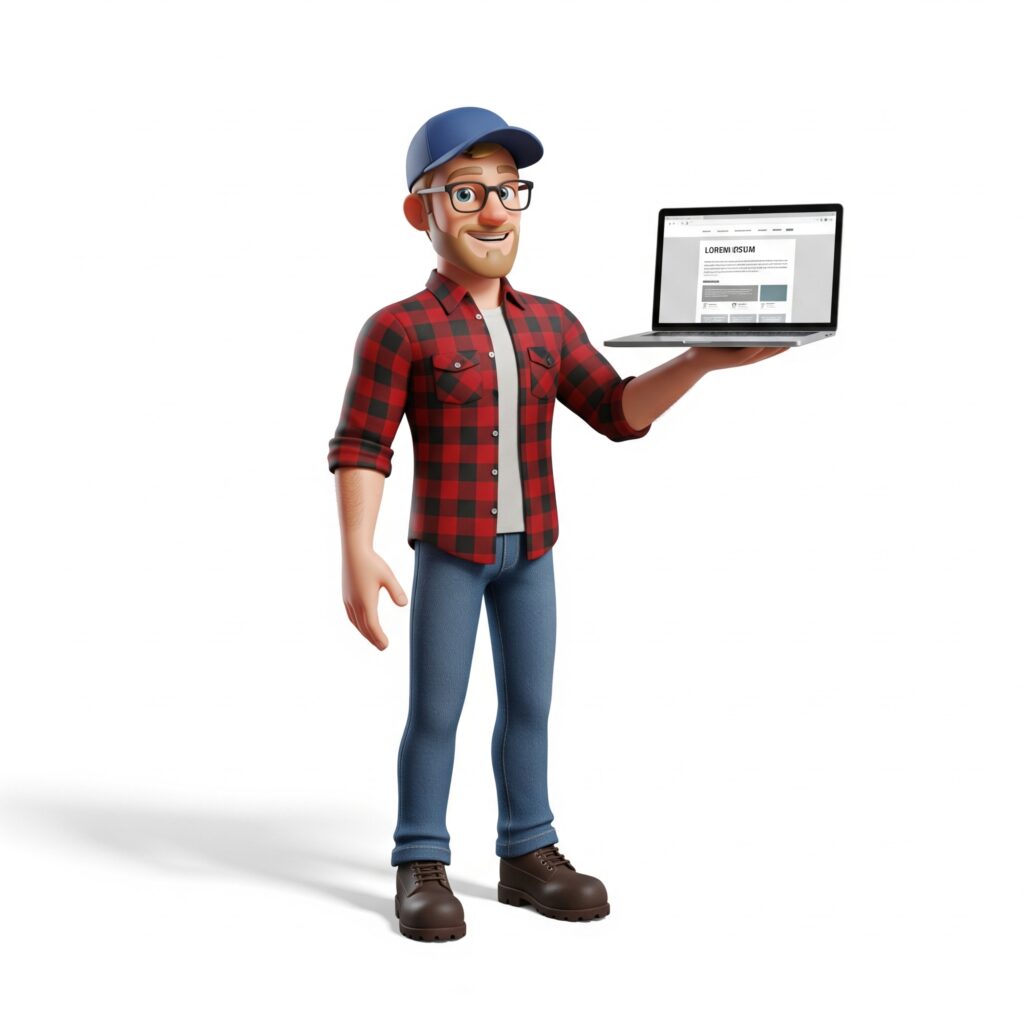
Your website does not need to be complicated. But it should have a good website strategy.
You can start with a simple one-page site that lists your phone number, address, and core services. That alone is better than nothing.
However, for the best SEO and Google search rankings, it helps to create one page for each service you offer.
Each page should be titled (with an H1 tag) in a way that matches how people search, for example:
- “Brake Repair in Hamilton”
- “Oil Change in Oakville”
- “Tire Replacement in Burlington”
On each page, make sure to use alternate names for the service. Customers often use different words. For example, someone might search “brake repair,” while another searches “fix squeaky brakes.”
By including these variations naturally in your text, you give your site a better chance of showing up in more searches.
The goal is to make it easy for Google to connect your shop to the words customers are typing in. Done right, this helps your site show up exactly when a local driver is looking for your service.
If you want examples of what makes a website work without wasting effort, take a look at our other blog: Website Strategy: Service Business vs. Product Business.
If you are looking for a web designer who understands auto repair companies, check out our web design services.
Website Basics for Mechanics:
- Prioritize simple “Book Now” buttons or other clear calls-to-action so visitors can contact you easily.
- Place NAP (Name, Address, Phone number) in the footer of every page.
- Make sure the site is fully mobile-friendly, since most visitors are on their phones.
- Use click-to-call phone numbers so mobile users can tap and dial instantly.
- Add forms only if you have the capacity to follow up with submissions quickly.
- Install Google Analytics and Google Search Console (both free) to track visits and searches.
- Include an embedded Google Map on your contact page so customers can find directions with one click.
- Add service pages titled “<Service> in <City>” for each main service you offer.
- Use alternate names for services throughout the text (example: “brake repair” and “fix squeaky brakes”).
- Keep fast load speeds by compressing images and avoiding cluttered designs.
- Add a few photos of your shop and staff so visitors feel comfortable knowing who they’ll meet.
- Place testimonials or reviews on the site to build trust right away.
- Ensure your hours of operation are listed clearly on the homepage and contact page.
- Add a sticky header (if possible) with your phone number always visible at the top.
- Use SSL security (https://) so the site shows up as secure in browsers.
- List your service areas if you serve multiple towns or neighborhoods.
- Add a FAQ section to answer common customer questions about process, payment, or services.
- Make sure your site includes a privacy policy and terms (Google considers this a trust signal).
Social Media
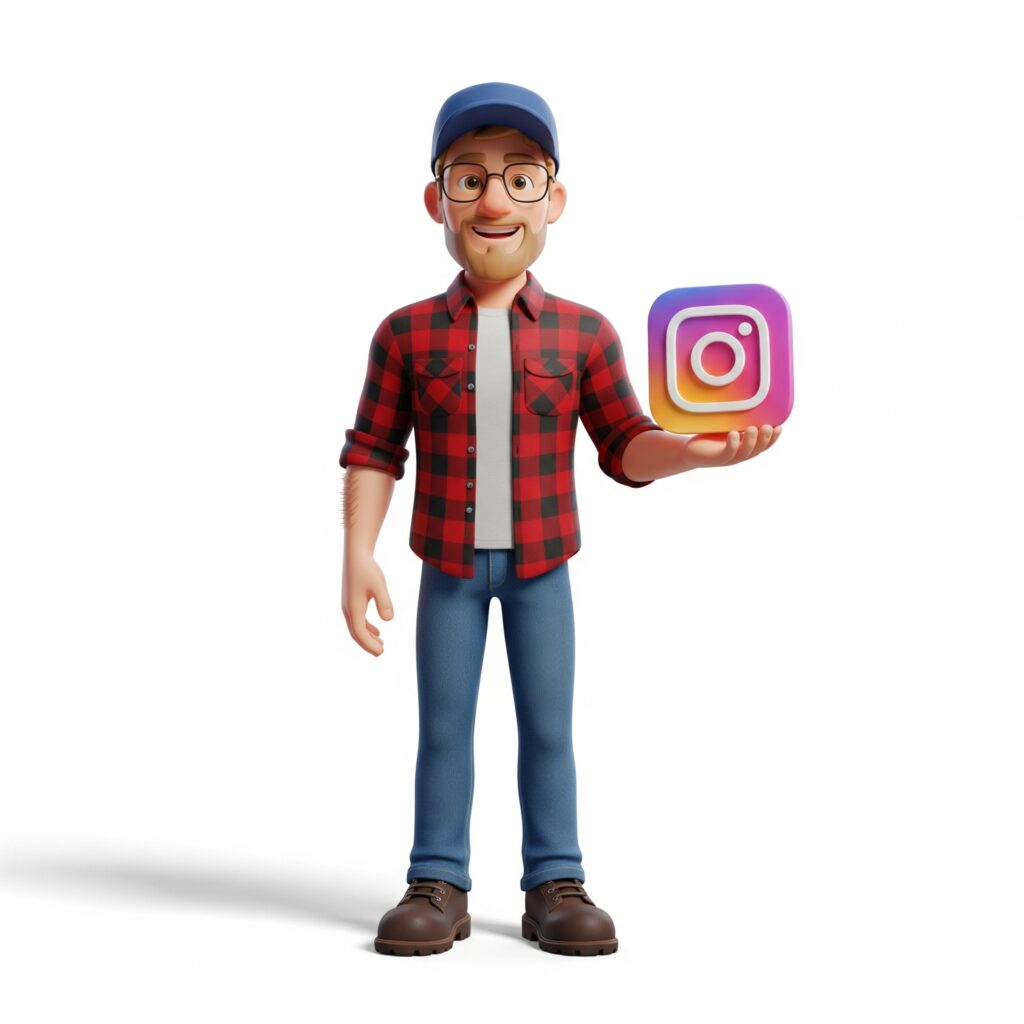
You don’t need to be everywhere at once. Start with one platform where your customers already spend time, like Facebook or Instagram. If you want to reach more places without extra work, you can use a social media planning tool that posts to all your accounts at the same time.
Your content does not need to be polished. In fact, customers often trust raw, real posts more than slick ads. Share things like:
- Before-and-after photos of a repair.
- A quick timelapse of your team working.
- Short videos explaining simple car tips.
Rotate through the different services you offer so your posts cover oil changes, brakes, tires, and other common jobs. In your captions, make sure to mention the service name. For example, “Brake repair finished today for a customer in Hamilton.” These keywords help your posts show up when people search.
Always tag your location. This connects your posts to your city, which makes them more likely to appear when locals look for your services.
If you want more support, check out our Social Media Management for Local Businesses services.
Offline Mechanic Marketing – Local Focus
Not everything happens online. Some of the most effective mechanic marketing ideas are simple, local, and right in front of your shop.
Think about the people driving by your lot every day. They already belong to the exact demographic you want:
- They own cars.
- They live or work in your area.
If you were to pay for digital ads, you might be able to target people in your neighborhood. But you could not filter for “car owners.” Everyone on the road passing your shop owns a car, which makes them one of the most qualified audiences you can reach.
This is why signage works so well. It is repetitive, hyper-local, and always in front of the right people.
Using Flags and Signs the Smart Way


Put eye-catching colored flags out front. Avoid clutter. Pick the top three services every driver eventually needs:
- Oil Changes
- Tire Changes
- Brakes
These are high-frequency services. Most car owners already know they should get them done. They just push them off until later. If they drive past your shop and see “Oil Changes” or “Tire Changes” every day, they are reminded constantly that you can handle the job. When the moment comes that they decide to act, your shop is top of mind.
The key here is that the flags are not about branding. You don’t need your logo plastered everywhere. The goal is to let local people know you actually do these services and to subtly remind them to think about it for their own car.
What usually happens is this: they drive by, the message plants in their mind, and later that day when they get home they search for your shop on Google Maps. That is why it is just as important to have an optimized profile on Google Business Profile for Local Businesses.
If they search and cannot find you, the flags lose their impact.
Keep It Clear and Consistent
- Use bold colors that stand out against your building and the street.
- Position signs where they can be read in three seconds by a driver passing at normal speed.
- No more than Two Words on each flag.
- Have a main entrance sign that has your business name, phone number and website somewhere near the front of your property.
Other Simple Local Plays
- Park a finished car clean and visible in the front row. A tidy lot signals a tidy business.
- Sponsor a local sports team. A few jerseys with your shop name go further than you think.
- Partner with nearby businesses like tow trucks, detailers, or gas stations.
- Consider other print marketing like pamphlets and flyers that you could put at other local stores.
Offline marketing works because it is both obvious and unavoidable. Unlike an ad someone can scroll past, a bright flag or sign out front plants the seed every time they drive by, and if your online presence is strong, those impressions will turn into real phone calls.
Packaging Services So They Sell Themselves
How you present your services can make the difference between a customer hesitating and a customer booking right away. Most car owners don’t know much about repairs, so they look for clear, simple choices.
Focus on Frequent Services
Promote the jobs every driver will eventually need. These include:
- Oil changes
- Brake repair
- Tire sales and installation
These services are the “gateway” to your shop. They bring people in the door. Once they trust you with these basics, they are more likely to stay for bigger jobs.
Use Good, Better, Best Options
Don’t just list one price. Instead, create three service levels. For example:
- Good: Basic oil change with standard oil and filter.
- Better: Premium oil, filter, and inspection.
- Best: Full synthetic oil, filter, inspection, and top-up of fluids.
Most customers choose the middle option. This approach makes the decision easier and often increases your average ticket size without pressure.
Run Seasonal Campaigns or Packages
Cars have seasonal needs, and customers respond well to reminders. You can plan promotions around:
- AC system checks in the spring.
- Winter tires and battery tests in the fall.
- Brake checks before long holiday travel.
Think of it like a grocery store promoting seasonal products. Just as Marketing for Grocery Stores uses holidays to drive traffic, you can use the seasons to remind customers about their car.
Keep the Language Simple
Use customer-friendly words on signs, websites, and flyers. For example, instead of “tire rotation,” some drivers may search “switching tires front to back.” Mix in the terms your customers might actually use, just like you would on your Local Landing Pages. This helps you connect better with real-world searches and makes your services easier to understand.
By packaging services this way, you remove confusion and give customers confidence to say yes.
Other Strategies To Get You Thinking
Incentivize Existing Customers to Beat the Rush
Automotive work has natural peaks, especially with tire changes. Most drivers wait until the first snowfall, then rush to swap tires all at once. This creates long lines, stressed customers, and an overbooked shop.
You can smooth this out by encouraging early bookings. Offer a small discount or priority scheduling for customers who change their tires before a set date, like November 15. This not only reduces the bottleneck in your shop but also makes customers feel like they got a deal.
Spring tire changes aren’t as urgent, but you can still use promotions through Email Marketing for Local Businesses or SMS reminders to keep your bays full during slower weeks.
Turning First-Time Customers Into Regulars
Bringing in new customers is important, but repeat business keeps shops alive.
- Pre-book the next service before they leave.
- Track service history and mention it. “We replaced your brakes last year, so you’re good.”
- Send simple reminders by text or call. If you want to go digital, look at Email Marketing for Local Businesses.
- Offer VIP clubs: a yearly fee for free inspections and discounts.
- Have a “punch card” system where they punch the card for every oil change, and after 10 they get a free one. Keep track of this on your end, so they can’t just punch their own card.
The goal is to make it easier to return to you than to call around.
Referrals That Actually Work
Referrals are the cheapest and strongest marketing channel for auto repair shops. But the system has to be easy.
This is about how you can automate and incentivize your existing customer base to bring in more customers.
Examples:
- If a new customer mentions the name of an existing customer, both parties will get $10 off their next oil change.
- Offer bigger incentives for referrals that bring multiple vehicles.
- If a customer gets their workplace (plumbers, landscapers, contractors) to switch to your shop, reward them with free service for a year or a major discount.
- One good referral could equal 10–20 vehicles on long-term accounts.
- Encourage families to bring all their cars to you.
- Offer a “family plan” where if two or more cars from the same household use your shop, everyone gets 10% off services.
- Customers feel like they’re saving as a group and don’t need to look elsewhere.
- Every time a customer refers someone, donate $10 to a local cause.
- Example: “Every referral in May helps support the youth soccer league.”
- People feel proud to share, since it’s not just about saving money.
- Build referrals into a loyalty program.
- Members get standard perks (discounts, inspections).
- For every referral, they get an extra free oil change or exclusive service credit.
- Helps you grow the club and the customer base at the same time.
Upselling With Respect
Upsells are important for shop profits, but they have to be done right. Customers are wary of mechanics pushing extras.
- Split repairs into urgent vs optional. “This should be done today. These other items can wait a few months.”
- Use photos and videos for proof.
- Keep explanations simple.
Respectful upselling positions you as their trusted advisor, not a salesperson.
Scaling Beyond the Basics
Once you’ve got steady work, you can focus on bigger opportunities.
- Target fleet accounts. Electricians, plumbers, and contractors often have multiple vehicles. Offer them priority service. (See Marketing for Electricians or Marketing for Home Builders).
- Track metrics like car count, average invoice, and repeat visits.
- Shift your mindset. Stop competing on price. Win on trust, reliability, and consistency.
Scaling also means building systems: scripts, checklists, and processes. That’s how you get predictable results. This approach works across all industries, from Marketing Strategy for Local Businesses to Advertising for Local Businesses.
Building a Strong Future With Mechanic Marketing
Mechanic marketing doesn’t have to be fancy. It’s about building trust, showing consistency, and adding small human touches.
If you can make customers feel respected and safe, they will stick with you and send friends your way. That’s how local auto shops can outlast big chains and grow year after year.


